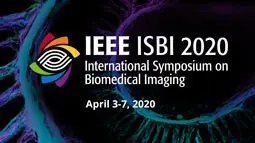A Generalized Framework of Pathlength Associated Community Estimation for Brain Structural Network
Yurong Chen, Haoteng Tang, Lei Guo, Jamie C. Peven, Heng Huang, Alex D. Leow, Melissa Lamar, Liang Zhan
-
Members: FreeSPS
IEEE Members: $11.00
Non-members: $15.00Length: 11:38
03 Apr 2020
Diffusion MRI-derived brain structural network has been widely used in brain research and community or modular structure is one of popular network features, which can be extracted from network edge-derived pathlengths. Conceptually, brain structural network edges represent the connecting strength between pair of nodes, thus non-negative.Many studies have demonstrated that each brain network edge can be affected by many confounding factors (e.g. age, sex, etc.) and this influence varies on each edge. However, after applying generalized linear regression to remove those confounding?s effects, some network edges may become negative, which leads to barriers in extracting the community structure. In this study, we propose a novel generalized framework to solve this negative edge issue in extracting the modular structure from brain structural network. We have compared our framework with traditional Q method. The results clearly demonstrated that our framework has significant advantages in both stability and sensitivity.



